I spent 2 days last weekend in the old spa town of Bath; the ostensible reason for this occasion was a short — 1/2 day — course on ramen making, run by Chef Tim Anderson — ’tis him on the right in the shot below — but we’d also planned that Val would be coming along. Circumstances (some ill-health, a cancelled train leg) meant that I went on my own, driving down.
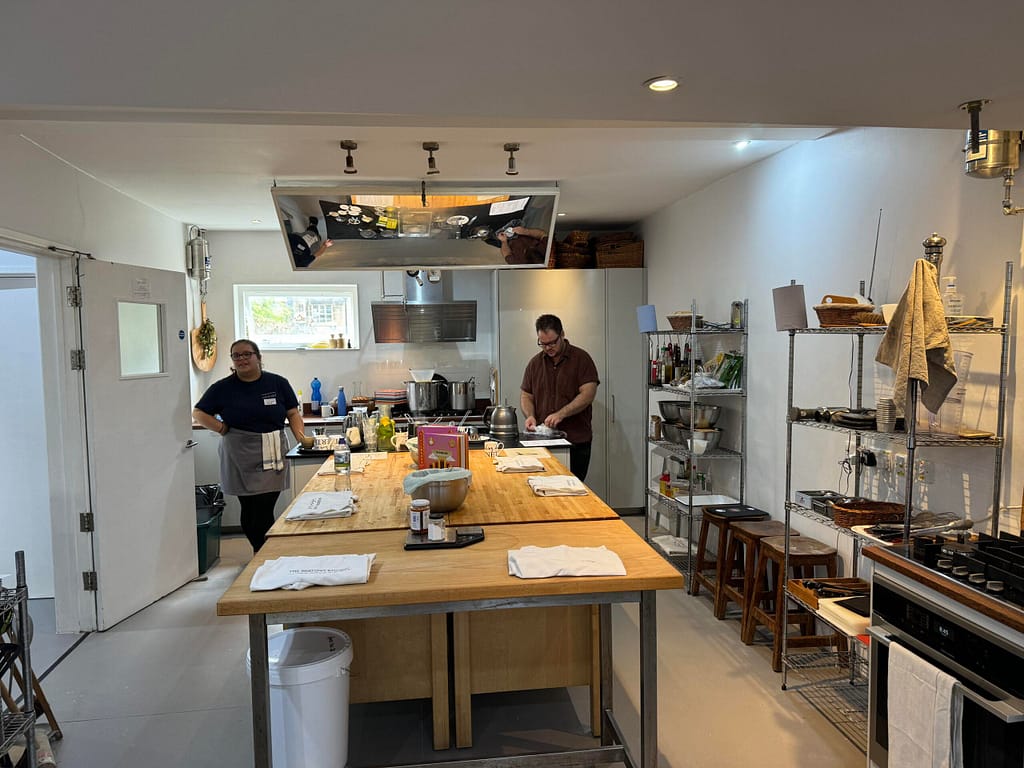
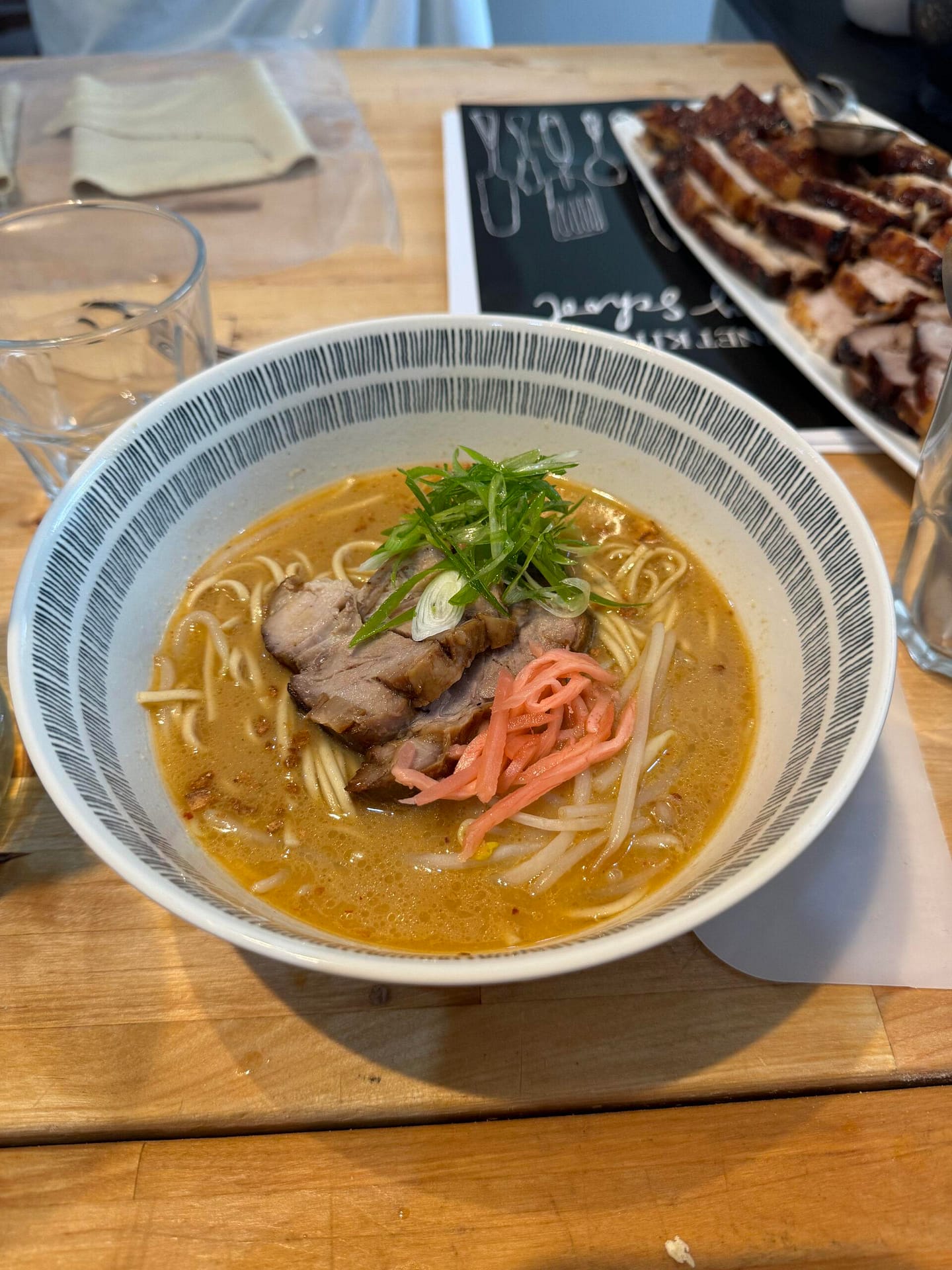
Not ideal as we’d looked to explore the town together and all, but hey, ho. The remaining spa and water treatments aside, there’s a feel of dust, decay and death in lots of the town It’s a strange mix…


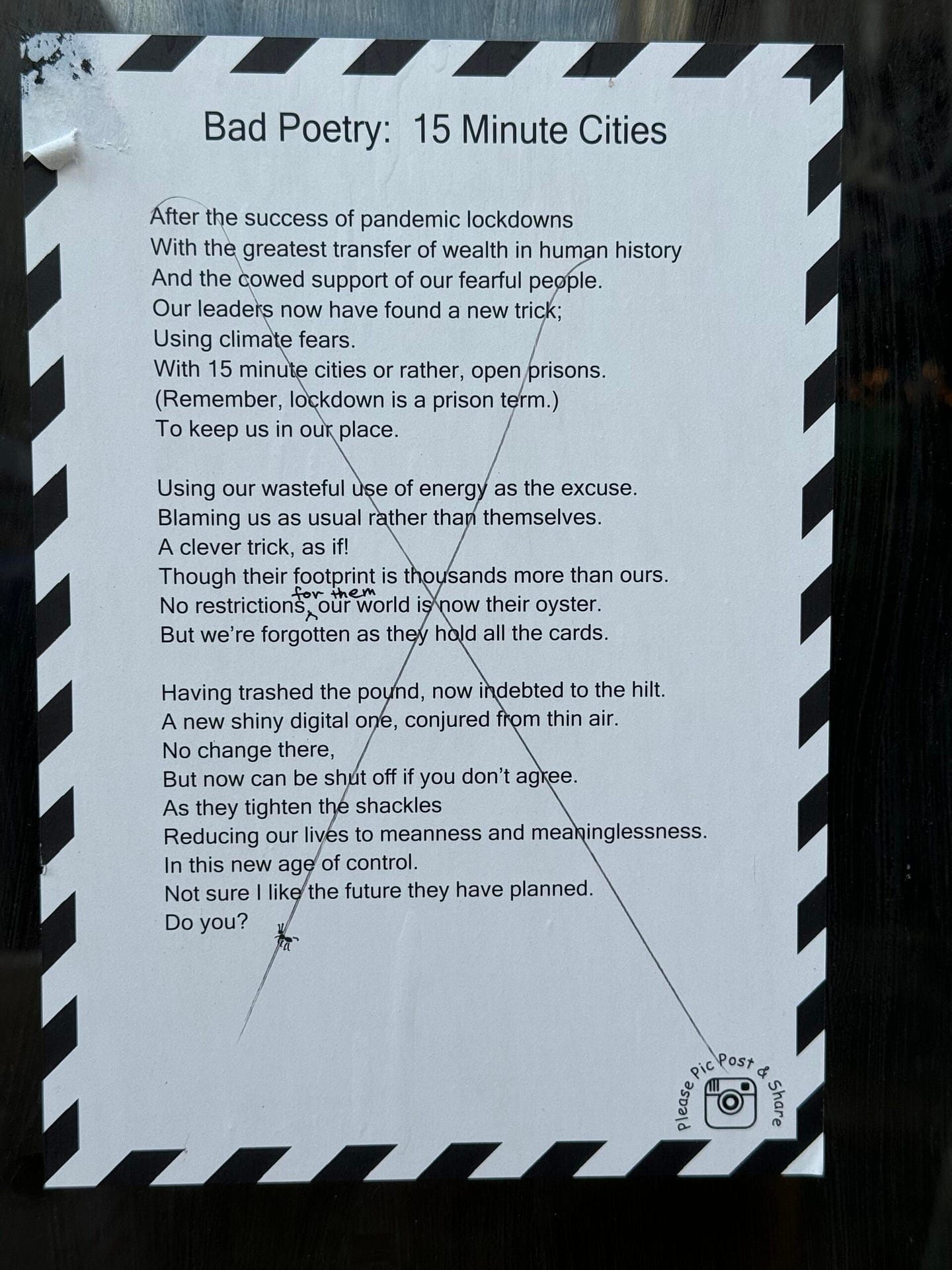

Asking noted izakaya & mackerel fan, Tim, where he’d eaten the previous night, he went to to rave about Budö Bar and his meal there on Friday night, so that was Saturday night’s food and drinks sorted for me. Finest kind. It was the best, a real surprise find, some great sake & a real star cooking on the konro and the team were uniformly excellent. Only a shame they’re 3.5 hours away from where I live. Arigatou gozaimasu!

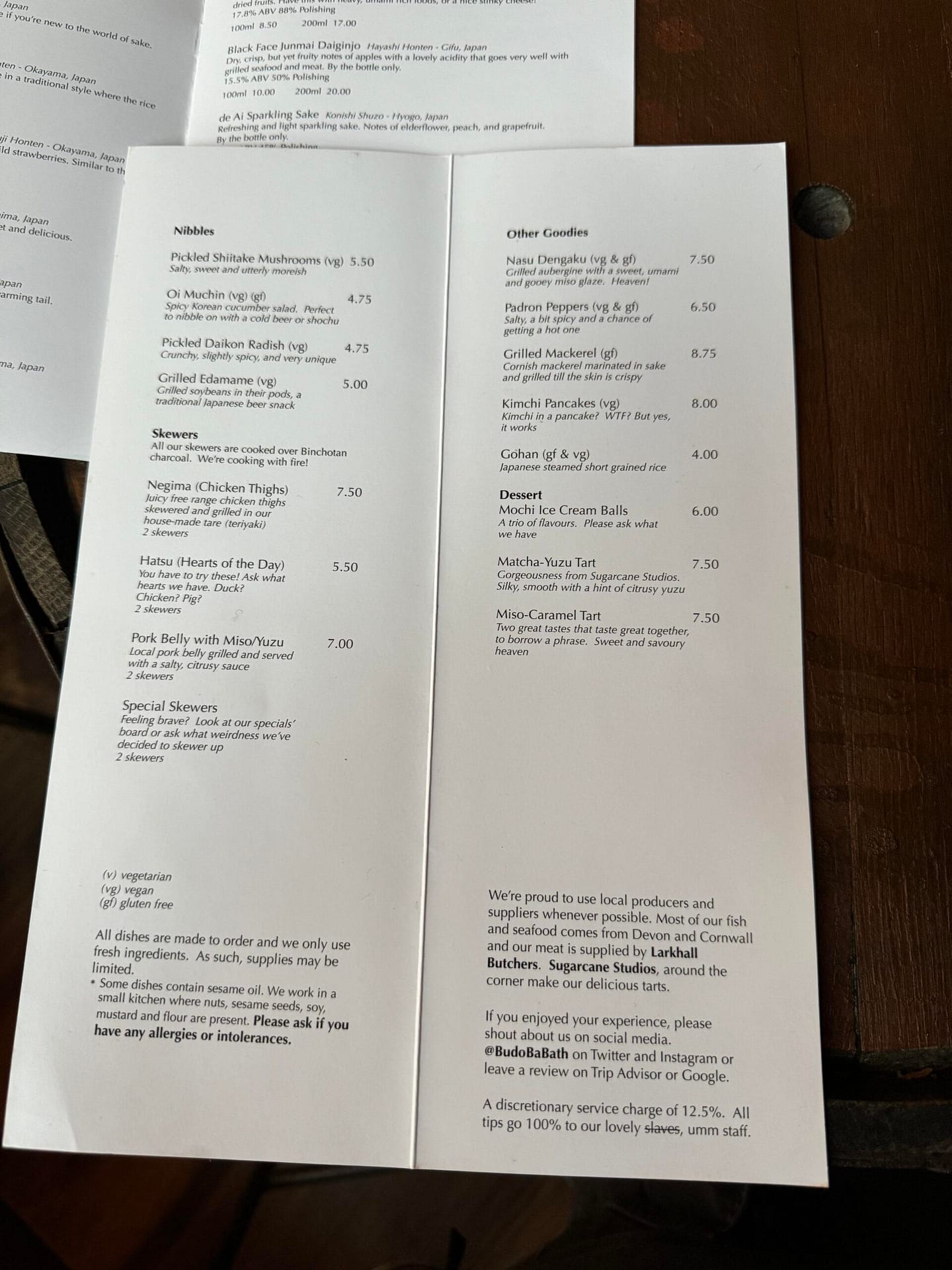
Budö Bar Bath is well worth your time and money. And yes, of course, I ate all the skewers. 
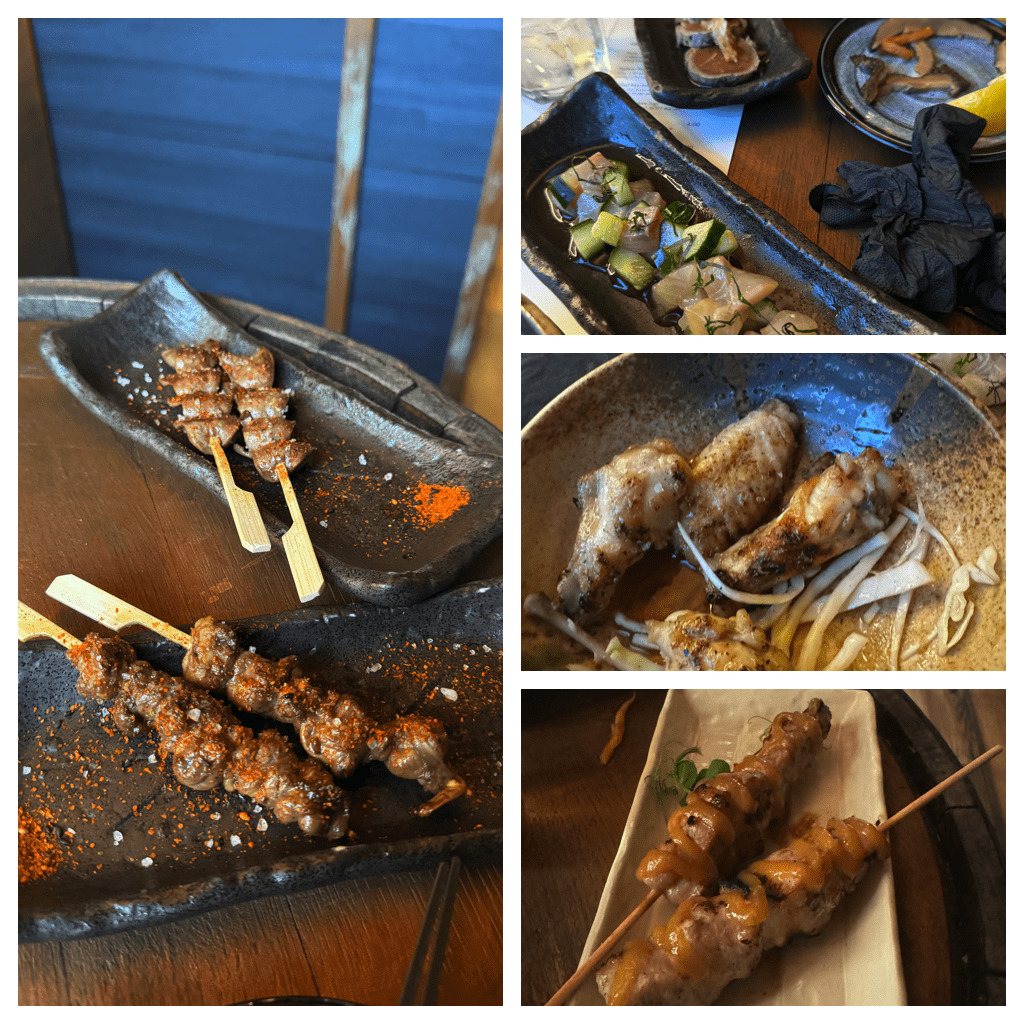
To end, in a very synergistic way, how about, “pork chop” lard rice?
There’s not one superfluous word there; nothing to be added, nothing that needs taking away. And any combination of any number of those words excite me…
(Note: I OCR’ed the words to the recipe, so excuse any formatting fuckups you might find.)
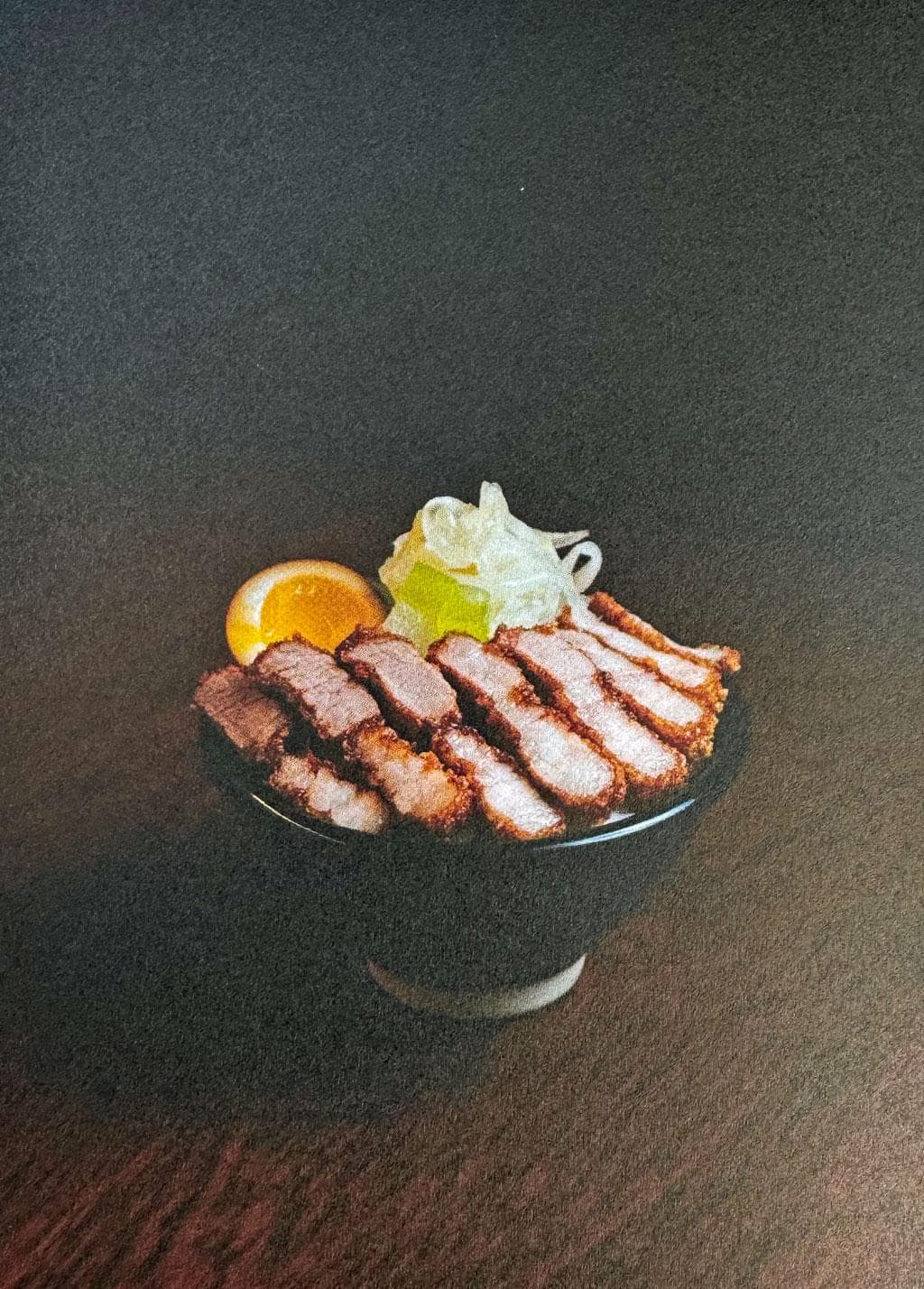
The picture (above) and recipe (below) is via “BAO: The Cookbook” and its genesis and subsequent refinement is described as follows:
I have specific associations with pork chop rice, in that I see it as a ‘work lunch’. I used to spend a lot of time at my parents’ workplace when was growing up, and the staff would routinely place group orders of bian dang (rice boxes) with a local vendor, where pork chop rice was always the most popular option. It’s those boxes that inspired us to create Rice Error (see page 11), but the flavour of the pork chop rice specifically that inspired this version in our restaurant.
Erchen Chang 2022
There are lots of different variations of pork chop rice – we marinate the pork in red fermented tofu, which is our interpretation of the traditional dish where the pork is marinated in hong tsao (red wine yeast), and serve it on top of lard rice, a dish that was served at our beloved restaurant XU (see page 11). Although modelled on pork chop rice, we actually use pork belly (side) as the cut, as it is fattier, and, to my mind, tastier.
You can find red fermented tofu (often sold as ‘red bean curd’ in jars or cans) and tapioca starch at Asian supermarkets. It is best to scoop out the tofu without draining the liquid, until it weighs 200 g.
Serves 5
For the ‘pork chop’:
I teaspoon ground white pepper
200 g red fermented tofu and liquid
5 teaspoons soy sauce
5 cloves garlic, minced
5 teaspoons caster (superfine) sugar
5 teaspoons five spice powder
5 teaspoons bicarbonate of soda (baking soda)
1 x 350-g pork belly (side)
50 g coarse tapioca starch
vegetable oil, for deep-frying
For the compressed cucumber:
1 cucumber
teaspoon salt
¾ teaspoon caster (superfine) sugar
For the compressed cucumber pickle:
20 g table salt
40 g caster (superfine) sugar
200 ml rice wine vinegar
2 green bird’s eye chillies
2 teaspoons sesame oil
30 g garlic, grated
For the rice:
375 g short-grain rice (preferably Chishang or Japanese sushi rice)
375 ml filtered water
For the soft-boiled soy eggs:
5 eggs
500 ml soy cure (see page 228, about 6½ quantities)
For the lard dressing:
100 g lard
25 ml premium soy sauce
1 tablespoon mirin
To serve:
5 teaspoons Black Garlic Glaze (see page 229)
75 g Pickled Daikon (see page 192)
5 teaspoons English mustard
25 g Crispy Shallots (see page 228)
‘Pork chop’
For the marinade, whisk together all the ingredients except the pork, tapioca starch and oil in a small bowl with 2 teaspoons water. Remove the skin from the pork belly (side), then cut the meat into five 1-cm (½-inch) thick slabs, each 12 cm (4½ inches) long. Put the slabs into non-reactive bowl, then coat with the marinade. Cover and leave to marinate in the refrigerator overnight, or for 8 hours. Remove the pork from the refrigerator and set aside while you prepare everything else.
Compressed cucumber
Peel the cucumber and cut off the ends. Put the skin and end trimmings into a blender, add 2 teaspoons water and the remaining ingredients and blend until smooth. Pass the mixture through a chinois sieve. Dice the cucumber flesh into 1.2 cm (½ inch) cubes, then out the cubes into a vacuum-pack bag with the liquid, seal and compress. Leave in the bag overnight, or for 8 hours. If you don’t have a vacuum-pack machine you can skip this compression step.
Compressed cucumber pickle
Dissolve the salt and sugar in the vinegar. Add the chopped chilli, sesame oil, grated garlic to the pickling liquor. Remove the compressed cucumber from the vacuum-pack bag and place in the pickling liquor. It just requires a quick pickle of at least 20 minutes.
Rice
Wash the rice thoroughly, 3 times. After the final rinse, tip the rice into a bowl, cover with cold water and leave to soak for 30 minutes. Pour the filtered water into a saucepan and bring to the boil. Drain the soakedrice and add to the boiling water. When the water is boiling again, put a lid on, reduce the heat to low and cook for 18 minutes. Open the lid to check that the rice is cooked and ever-so-slightly glistening but not wet. Put the lid back on, remove from the heat and let the rice rest for10 minutes before serving. This process allows the remaining steam toabsorb back into the grains, resulting in fluffy and bouncy rice. At no point remove the lid from the pan.
Soft-boiled soy eggs
While the rice is cooking, put the eggs into a saucepan of cold water, bring to the boil, and boil for 5 minutes. Drain, then refresh in cold water. Peel the eggs and put into a bowl. Add the soy cure and leave to marinate for 6-12 hours.
Lard dressing
Melt the lard in a saucepan, then emulsify with the soy sauce and mirin.
To assemble
When ready to serve, coat the pork in the tapioca starch. Heat the oil in adeep, heavy-based saucepan to 180°C/350°F, or until a cube of ginger sizzles in and browns in 10 seconds. Working in batches, carefully place the pork slabs in the hot oil and deep-fry for 2½ minutes until cooked through, crisp and golden, then remove with a slotted spoon or tongs and drain on paper towels. Divide the rice among 5 bowls and very gently smooth the surface. Do notpress or compact the rice down. Use a cook’s blowtorch to blacken the top of the rice. Drizzle the lard dressing generously over the rice. Brush each pork slab with 1 teaspoon of the black garlic glaze, then cut into 1 cm (½-inch) slices and lay on top of the rice. Top with the pickled daikon, compressed cucumber and the halved eggs. Finish with the mustard and crispy shallots.
Thanks Gay! I think she’d agree that she’s feeling a lot better but will leave her to give you chapter & verse 🙂
And yes, lard chop! x
Wow! I can’t have noodles but the pork chop rice sounds wonderful …..
Hope Val feels better soon, we need to do Saggar firing next.
Gay x
Comments are closed.